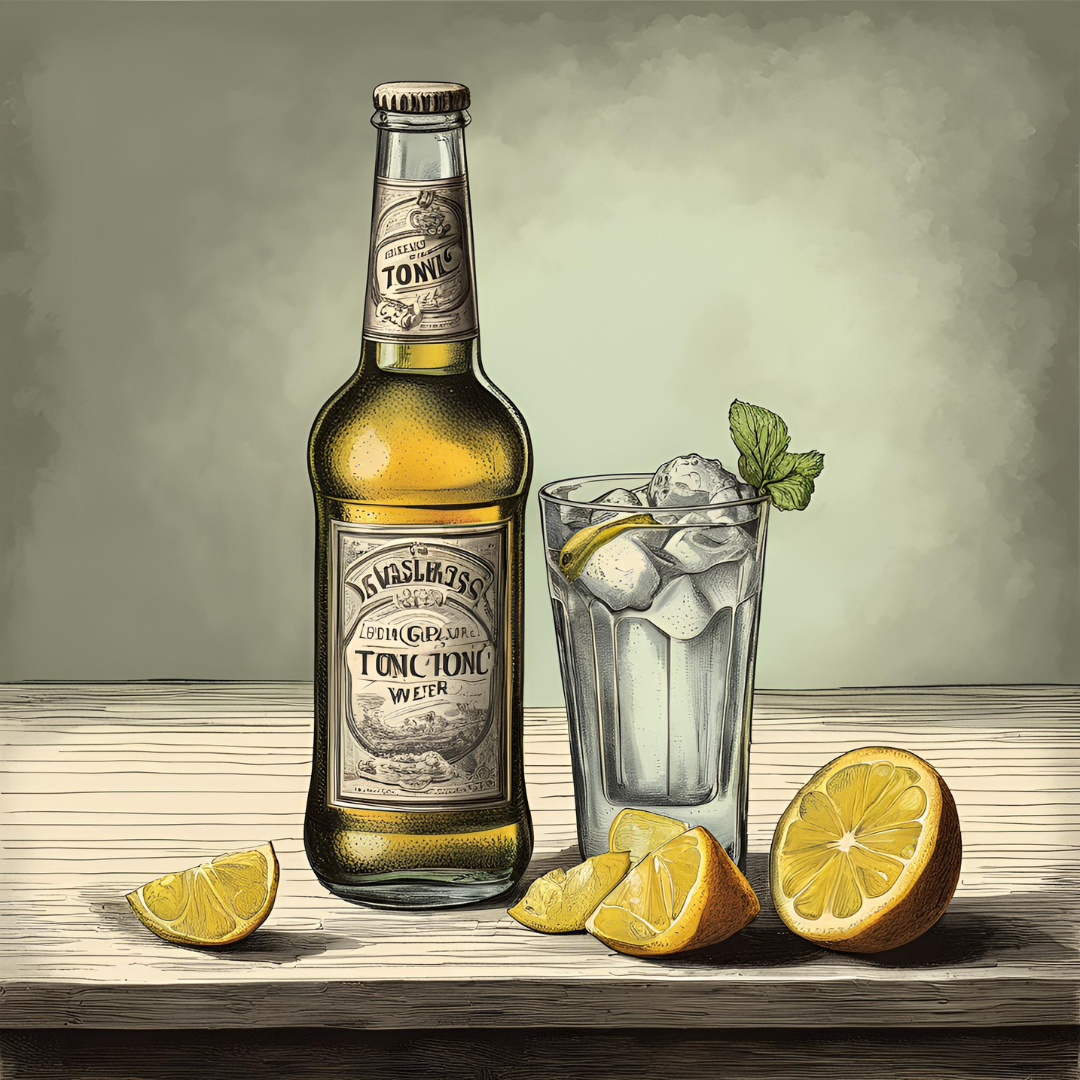Between Malaria and Mixology: A Brief Introduction to Tonic Water
[This post was originally posted on 20 Aug 2024]
Be it summer or winter, 1pm or 10pm, if you are in Britain, odds are there is someone ordering a gin and tonic. That someone is likely a blonde woman named Sarah. Sarah lives in London, wears nail polish, and the closest she’s really come to a rainforest is an instagram reel from a travel influencer.
Does Sarah know what’s inside her drink?
If Britain’s obsession with gin goes all the way back to the Gin Craze in the 1700s (when the government had to introduce policies to control its production and distribution as everyone was getting drunk off it), the history of Tonic Water is a much more intricate tale. One of colonialism (no surprises there) and medicine.
One of the main ingredients of tonic water is quinine: a chemical compound best known as an antimalarial treatment. Extracted from the bark of the cinchona tree - a plant native to the forests of South America - quinine is a bitter substance that can pretty much kill the parasite that causes malaria. First used by Indigenous communities in the Andes, quinine made its way to Europe in the 1600s (through Spanish colonisers/missionaries) and quickly became the ONE item to have for “intrepid explorers” (i.e. British, French and Dutch colonisers) venturing around tropical regions.
By the 1800s, quinine was widely used all around the British Empire. Diluted with sugary - and later carbonated - water to mitigate its pungent bitterness (which is the prototype recipe for modern-day Tonic Water), and often paired with alcoholic beverages (some say to boost morale), quinine-infused drinks were a big hit amongst officials and military personnel alike. Although, compared to the treatments of today, quinine’s effectiveness against fever and malaria was (and is) rather limited, its usage as medicine was integral to the expansion of the British empire at the time.
Fun fact: Did you know quinine is fluorescent? When diluted, it makes the water look blue-ish.
Technically speaking, the creation of herbal tonics (i.e. herbal “potions” for the healing and wellbeing of the body) is a centuries old - or rather millennia old - practice. From ancient Persia to China, there are countless examples of plants being used for medicinal purposes throughout history. In that sense, extracting quinine was not entirely novel. What makes tonic water unique is its transition to a recreational drink.
The first reference of a tonic water cocktail appears in 1863 in Hong Kong following the establishment of a commercial patent for Tonic Water back in the UK. Mixed with ginger brandy, the fizzy drink was sold as a digestive; something able to ease the tropical heat. Perhaps excessive in its alleged properties, the drink was still something novel and refreshing. Over the following decades, tonic water as both a stand-alone drink and a mixer gradually gained popularity around British colonies (especially India) before eventually taking over the world - sort of. Until recently, several countries (see Japan) had quinine on the list of banned substances due to its extensive health risks.
Often sold with added flavourings such as lemon or lime, the current version of tonic water has a much lower amount of quinine, and is widely available in supermarkets and bars. Quinine as a medical treatment has not entirely disappeared either. Despite the potentially severe health complications its consumption can cause, quinine pills are still available in certain markets to treat conditions such as night cramps.
Fascinating, right? Not going to lie: growing up, I thought tonic water was just a sugary soda. I mean, I wasn’t too far off. I remember my mom saying it was “not good” but - as a child - I never questioned whether her comment was about its flavour, its health, its origin or just her personal preference. Knowing about its history and complexity now, I somehow find that answer incredibly loaded.
Is it already time for G&T now?

